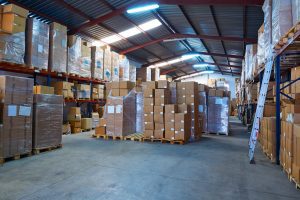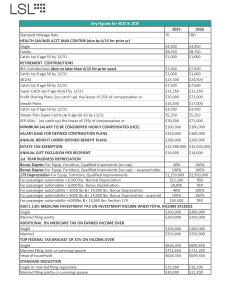Key Takeaways:
- The One Big Beautiful Bill Act (OBBBA) introduced Qualified Production Property (QPP)—a new tax incentive that allows certain businesses to immediately expense the cost of new production facilities.
- Eligible taxpayers can deduct 100% of the adjusted basis of qualifying property in the year it’s placed in service— instead of depreciating it over the traditional 39-year period.
- The incentive targets U.S.-based manufacturing, refining, and production activities that involve transforming tangible goods.
- Timing is critical: construction must begin after January 19, 2025, and the property must be placed in service by January 1, 2031.
- QPP applies to both new builds and major renovations—learn how it works in each case below.
What Is Qualified Production Property (QPP)?
In simple terms, QPP allows companies that build or substantially renovate facilities used in manufacturing, production, or refining tangible products to deduct the full cost of those facilities in the year they’re placed in service.
For manufacturers, that means skipping the traditional 39-year depreciation schedule and taking a 100% deduction upfront—a huge cash flow advantage that can fuel reinvestment, expansion, and innovation.
What Types of Property Qualify?
To qualify, the property must meet specific conditions. Here’s a quick breakdown of the main qualification criteria:
| Requirement | Description |
| Eligible Property | Nonresidential real property (such as factories, plants, or production facilities) located in the U.S. or its possessions. |
| Use Requirement | Must be used as an integral part of a qualified production activity—manufacturing, production, or refining tangible personal property. |
| Construction Timeline | Construction must begin after January 19, 2025 and before January 1, 2029. |
| Placed in Service Deadline | Property must be placed in service by January 1, 2031. |
| Original Use | Original use must begin with the taxpayer meaning it must be newly constructed or substantially improved for the taxpayer’s own production use (or meet the unused property exception – see below). |
| Election | Taxpayers must elect to treat the property as QPP for the tax year it’s placed in service. |
NOTE: Property leased to another party does not qualify for QPP treatment—the property must be owned and used by the taxpayer as part of their own production operations.
Only the portions of a building directly used in the production process qualify. That means manufacturing floors, production lines, and integral infrastructure are eligible—but office space, administrative areas, parking lots, and sales departments are not.
The Unused Property Exception
QPP also applies to certain existing facilities under the “unused property” exception. To qualify, the building or structure must not have been used in any qualified production activity by any taxpayer during the period from January 1, 2021 through May 12, 2025. The taxpayer must also not have used the property at any time before acquisition.
In other words, if a company purchases an idle industrial building that has sat unused for several years—and then renovates or converts it for manufacturing or production—it may still qualify for 100% expensing under QPP. This makes the rule especially valuable for manufacturers revitalizing existing space instead of building new.
What Activities Count as “Qualified Production”?
A “qualified production activity” (QPA) involves manufacturing or producing tangible personal property where a substantial transformation occurs.
Examples include:
- Turning raw materials into finished products (e.g., steel fabricator, furniture manufacturer, food processor).
- Refining natural resources (e.g., oil refinery, water treatment facility).
- Fabricating, assembling, or processing goods for sale (e.g., automotive parts plant, printing company, clothing manufacturer).
However, activities like software development, service-based operations, or assembling products without material transformation generally do not qualify.
Why It Matters for Manufacturers
QPP can have a major impact on cash flow and capital budgeting. Immediate expensing of real property means companies can recover the cost of large capital projects upfront instead of spreading it out over decades. The result? More liquidity, stronger balance sheets, and greater flexibility to reinvest where it counts.
Immediate expensing of real property means:
- Faster return on investment for new facilities.
- Increased cash flow for reinvestment in equipment, hiring, or R&D.
- Enhanced after-tax earnings in the year of construction completion.
For manufacturers, QPP is more than a tax break—it’s a growth strategy. Immediate expensing of production facilities fuels reinvestment, boosts profitability, and helps drive the next wave of U.S. manufacturing innovation.
How QPP Works: New Construction vs. Renovation Projects
Example #1 – New Build: Turning a $20 Million Plant into an Immediate Deduction
A manufacturing company in California builds a new $20 million production facility to expand its operations. Construction begins in March 2026, and the plant is placed in service in 2028, falling squarely within the QPP eligibility window.
Normally, this type of property would be depreciated over 39 years, producing about $512,000 in annual deductions—or roughly $128,000 in yearly tax savings at a 25% rate. Under QPP, however, the company can expense the full $20 million in 2028, generating an estimated $5 million in tax savings all at once.
Those savings can be reinvested immediately into new equipment, additional staff, or R&D initiatives—accelerating growth and strengthening the company’s competitive position.
To qualify, construction must begin after January 19, 2025, and the majority of the facility must be dedicated to direct production activities (not offices or warehousing). Proper cost segregation and documentation help confirm eligibility and ensure the full benefit is captured.
The Takeaway: QPP turns decades of depreciation into an instant deduction—freeing up cash flow, improving ROI, and fueling faster expansion for manufacturers.
Example #2 – Renovation: Revitalizing an Existing Facility for Full Expensing
A manufacturer purchases an $8 million industrial building in 2026 that has been vacant and unused for several years—and, importantly, hasn’t been used in any production activity since before May 12, 2025. The company invests another $4 million in upgrades—new electrical systems, HVAC, and manufacturing lines—and places the renovated facility in service in 2028.
Because the building qualifies under the “unused property” exception, the full $12 million investment can be treated as Qualified Production Property. Instead of depreciating over 39 years (about $308,000 per year), the company can deduct the entire $12 million in 2028, realizing approximately $3 million in immediate tax savings.
The Takeaway: QPP isn’t just for new construction—it also rewards businesses that revitalize underutilized industrial space. For many manufacturers, renovating an existing building is faster, more cost-effective, and just as rewarding under QPP.
Key Planning Considerations
Before claiming QPP expensing, businesses should take a close look at a few critical details to ensure they qualify — and to maximize the benefit:
- Construction Timing: Projects must start after January 19, 2025 and before January 1, 2029. Starting too early (or finishing too late) could disqualify your facility from QPP.
- Use and Allocation: Only the areas directly used in manufacturing or production count. A cost segregation study can help separate qualifying production space from nonqualifying areas like offices or parking.
- Recapture Risk: If the facility stops being used for production within ten years—such as converting it into warehouse or administrative space—the IRS may recapture part of the deduction.
- State Conformity: Some states may decouple from federal QPP rules, so verify how your deduction plays out at the state level before filing.
- Documentation: Keep detailed records—construction contracts, blueprints, and production layouts—to support your election if reviewed or audited.
Final Thoughts
The introduction of QPP under the One Big Beautiful Bill Act represents a once-in-a-generation opportunity for manufacturers to accelerate deductions, enhance cash flow, and reinvest in their businesses.
But with limited timeframes and detailed qualification rules, planning early is key.
If your business is considering building or expanding a production facility in the next few years, now’s the time to talk with your CPA about how to take advantage of QPP.
Ready to explore whether your new facility qualifies for 100% expensing under QPP? Contact us today!




